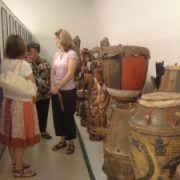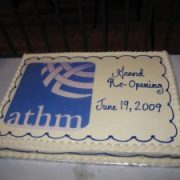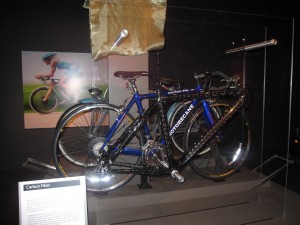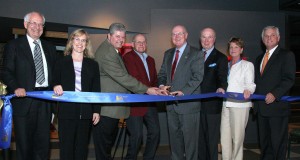Thanks to Louise Shaw, Curator, Global Health Odyssey Museum, Centers for Disease Control and Prevention, for this guest post.

As curator of the Global Health Odyssey Museum at the Centers for Disease Control and Prevention [CDC] in Atlanta, I had the challenging and exciting task of designing and installing Design for the Other 90%. This traveling exhibit was curated by Cynthia Smith of the Smithsonian’s Cooper-Hewitt, National Design Museum in New York City, and “features more than 30 projects that reflect a growing movement among designers, engineers, and social entrepreneurs to create low-cost solutions for everyday problems,” targeting 90% of the world’s 6.5 billion people who “have little or no access to most of the products and services many of us take for granted.”
Context is everything.
As one of the world’s leading public health agencies, CDC is committed to achieving true improvements in all people’s lives, and we walk the walk. This explains why the Global Health Odyssey Museum was interested in mounting Design for the Other 90%. At CDC, we believe that poverty, whether abroad or in the U.S., is directly linked to health gaps, disproportionately affecting certain populations, as well as geographic regions. Any effort to improve global health must also holistically address issues of education; shelter; access to water, food, and technology; affordable transportation; economic opportunities; and sustainability.
So, what an opportunity Design for the Other 90% has been. We are engaging with CDC staff members who actually have been deeply involved in the issues brought up in the exhibit, as well as the evaluation and distribution of some of the design objects on display. The exhibit has also drawn tremendous interest from educational institutions such as the Georgia Institute of Technology and Savannah College of Art and Design, and from the entire Atlanta design community.
Because the original installation was mounted totally outside on the CH’s grounds, each host institution was tasked to create a new and unique design plan, and fabricate its own exhibit display elements. We had a great time figuring out how to display objects ranging from a latrine slab used in refugee camps in East Africa to a house for the homeless made by the Atlanta-based Mad Housers to treated bednets. Our entire design and fabrication team really rose to the occasion, using warehouse crates for pedestals, building floor trays to display objects such as water pumps, and even appropriating a piece of 1000-pound concrete as a base for a 12′ solar lamp post!
At the end of the day, by highlighting innovative designs meant to improve the lives of all, we have been able to acknowledge our collective responsibility for both solutions and actions. Like the previous hosts of the exhibit–the Walker Art Center in Minneapolis and the Ontario College of Art and Design in Toronto, Canada–we are committed to exploring issues of social change and justice that will allow the world’s populations to live the best lives possible.
To learn more about this exhibition and its travel schedule, visit it online at https://other90.cooperhewitt.org/
or email Cynthia Smith at SmithCynthia@si.edu.


















